At Despacio, we’d like to think our publications have created changes in urban policies. Although we cannot prove this scientifically, we hope that our reports and books have had this kind of influence. Below, a list of our publications.
– In 2012, we conducted research, designed and published Bogotá 21 (Pardo was a co-author), which proposed ways for Bogotá to promote transit-oriented development while improving the city’s economic conditions. GIZ and Siemens financed the project, which Despacio carried out alongside Universidad de los Andes and Infratrans Consulting. Wanting to do something else, we developed a video and a launch event for the book. This was Despacio’s first publication and still one of our proudest.
– In a 2013 project for the IDB and ITDP, we turned to the topic of parking, which we felt required urgent discussion. Despacio conducted research on congestion reduction and parking policies in 12 Latin American cities. This research project resulted in a final report totalling more than 500 pages without appendices and a much shorter guide to congestion reduction and parking policy in Latin America. Despacio also organized a launch event in Bogotá for the publication. Click here for more information on the event and here to download the guide.
– We had a little bit of energy left in 2013 to publish (with few resources but a lot of interest) the Bicycle Parking Guide that included a design guide, recommendations and a brief guide on measuring emissions reductions resulting from implementing bicycle parking.
– In 2014, after various conversations with the Bogotá Chamber of Commerce, we decided to focus on the potential of non-motorized transport for Sustainable Transit-Oriented Development («DOTS» in Spanish). We conducted a study to examine this question in the specific case of Bogotá and subsequently published a book on the subject (click for more information and a PDF version).
– At the very end of 2014, we decided to invest the small amount of money left over in our first publication of 2015: the Bogotá Bicycle Account. We ended up with a report of almost 100 pages compiling and detailing various aspects of bicycle use in Bogotá, published first in English with a subsequent summary in Spanish. We held a launch event in Bogotá for the Spanish version alongside the Chamber of Commerce and the Embassy of Denmark.
– Despacio supported the IDB’s publication, «Bicycle Inclusion in Latin America and the Caribbean: a guide for boosting bicycle use,» a preliminary exercise that compiled information about bike-inclusive policies in more than 50 cities in the region.
– Finally, we’re about to publish another book for the CAF about the critical topic of motorcycles in Latin America, which has some of the results of our 2012 qualitative study about motorcycles in six cities in the region.
Now, what have these PDFs and all this paper actually done?
– The topic of Sustainable Transit-Oriented Development (presented in Bogotá 21 and later in the publication on NMT and DOTS) has gained strength since the end of 2012. In fact, the Colombian government is in the process of receiving 20 million dollars to implement transit-oriented development in Colombia! This effort is called the TOD NAMA and is being promoted by both local and international organizations. Although Despacio is not part of the TOD NAMA project, many people have thanked us for Bogotá 21, which made people ask «is my city doing TOD?»
– The bicycle indicators presented in both the Bicycle Account and the bicycle-inclusion guide have received a lot of attention in recent months and many Latin American cities have started to think about how to improve their statistics and show themselves as places that promote bicycle use.
– A number of Latin American cities have started shifting slowly towards more sustainable parking policies, using Despacio’s parking guide as a reference for making improvements.
So that’s what we at Despacio have done so far. The thought that our publications (and those that we have supported) have had an impact on urban and transport policies around the world makes us very happy. We hope you find the documents useful as well. For a full list of our publications, click here.


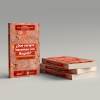
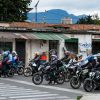
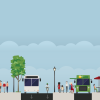
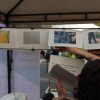

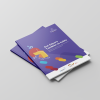

Comentarios recientes